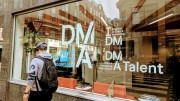 The IPA’s 2021 Agency Census is classic “curate’s egg”, with agency staff numbers stabilising after last year’s slump but still way off pre-pandemic levels, and ethnicity and gender diversity improving but only at the expense of huge pay gaps.
The IPA’s 2021 Agency Census is classic “curate’s egg”, with agency staff numbers stabilising after last year’s slump but still way off pre-pandemic levels, and ethnicity and gender diversity improving but only at the expense of huge pay gaps.
The Census, now in its 62nd year, reveals the number of employees within IPA member agencies on September 1 2021 was 22,062, down 0.6% on the 2020 figures of 22,188. This is markedly more stable than the 10.8% drop in staffing levels measured in the 2020 Agency Census.
Breaking down the 2021 figures, the number of employees in creative and other non-media agencies fell marginally from an estimated 12,298 in 2020 to 12,278 in 2021, while the number of employees in media agencies fell from an estimated 9,890 in 2020 to 9,784 in 2021.
Meanwhile, the overall number of male employees fell from an estimated 10,752 in 2020 to 10,403 in 2021, while the number of female employees increased from an estimated 11,411 in 2020 to 11,612 in 2021.
When it comes to ethnic diversity, the percentage of employees from a non-white background is estimated at 18.3%, up from 15.3% reported in 2020.
Individuals from an Asian or Asian British background account for 7.9% of the employee base, while those from a Black or Black British background account for 4.4%, and those from a Mixed or multiple ethnic background 4.1%. Those from any other ethnic background account for around 2.0%.
In terms of seniority, individuals from a non-white background account for 7.1% of C-suite roles in agencies, up from 6.4% reported in 2020, this increase has been driven by creative and other non-media agencies at 7.4% vs 6.6% in media agencies.
Meanwhile, individuals from a non-white background occupy 27.1% of entry and junior level roles, up from the 21.9% in 2020. Dividing this into agency type, in media agencies 30.2% of individuals are from a non-white background, up from 25.9% in 2020, while the equivalent figure in creative and other non-media agencies is 23.6%, up from 17.8% in 2020.
The number of women in C-suite positions has also increased, albeit marginally. Females occupied 33.5% of C-suite roles, up from the 32.4% recorded in 2020. This figure was slightly higher in creative and non-media agencies, at 33.9% than in media agencies (32.8%).
However, while ethnicity and diversity might be inching up, among those member agencies providing salary breakdowns by gender and seniority, a pay gap of 23.3% in favour of males exists, little changed on the 22.7% recorded in 2020.
At 25.8%, the gender pay gap is significantly higher in creative and other non-media agencies than it is in media agencies, where it stands at 18.9%.
Among those member agencies providing salary breakdowns by ethnicity and seniority, an ethnicity pay gap of 21.2% in favour of white employees exists, up on the 19.5% reported in 2020. At 23.4%, the differential is higher in media agencies than it is in creative and other non-media agencies where it stands at 15.3%.
Even so, there have at least been improvements in working practices, fuelled by the pandemic, with the vast majority of agencies are adopting hybrid working models.
Over 85% of agencies indicated that following Covid-19 they would be adopting a hybrid approach to working. Just over a third of agencies (35%) indicated that they would be adopting a two-days remote/three-days office model for their workers while 31.1% indicated that they would be adopting a three-days remote/two-days office model, and 14.6% a fully flexible approach.
IPA director general Paul Bainsfair said there are some “welcome figures” within this year’s Census findings, citing the increase in the ethnic diversity, which he insisted has been fuelled by “fantastic initiatives our industry has embraced over the past couple of years, and we mustn’t lose momentum here”.
He added: “It is also interesting to see the impact that the pandemic has had on our agency working models. With flexible working considered as one of the core opportunities for improving diversity, it is positive news that agencies are adopting hybrid working models.”
“Despite these areas of positivity, with talent as our industry’s most valuable resource, there is of course more to be done.”
Related stories
Skewed media spend is reinforcing gender bias in ads
Lego ‘Get the World Ready for Girls’: Building spirit
Census shows industry at worst but it vows to change
Mad world: Top marketing role seen as ‘man’s work’
Women ‘conditioned to feel less deserving than men’
Most men won’t tackle gender equality, at home or work
Agencies unveil diversity-led apprenticeship programme
Industry pledges ‘deep, lasting action’ to combat racism















